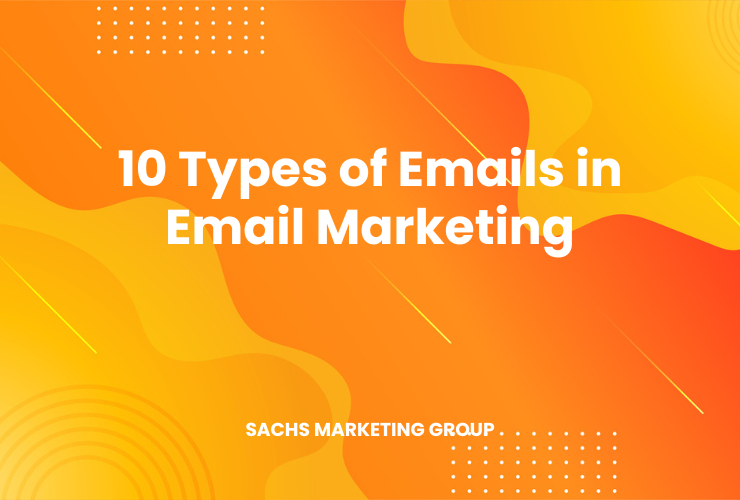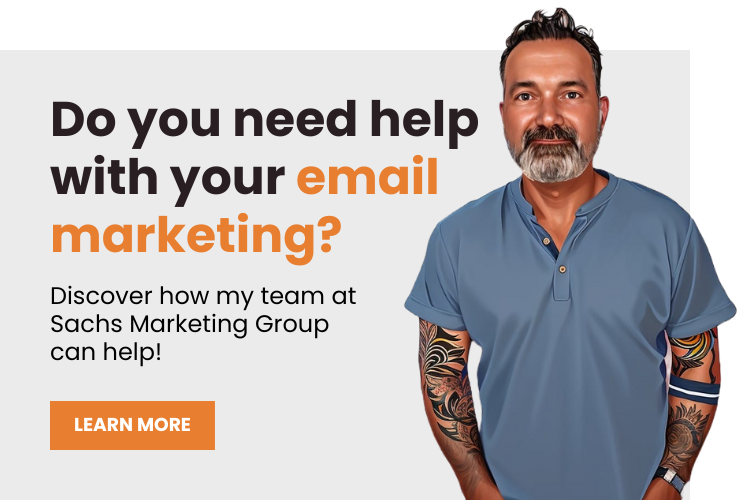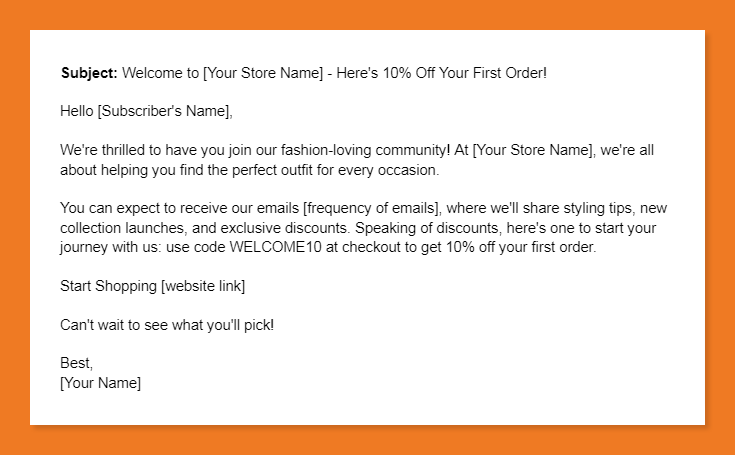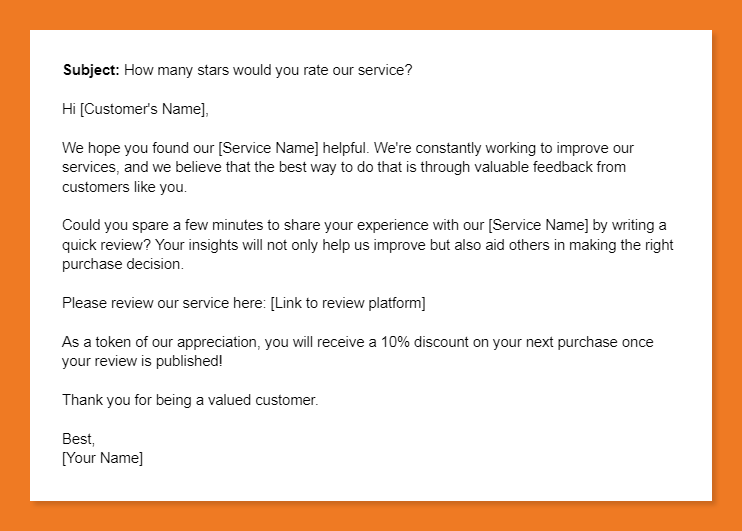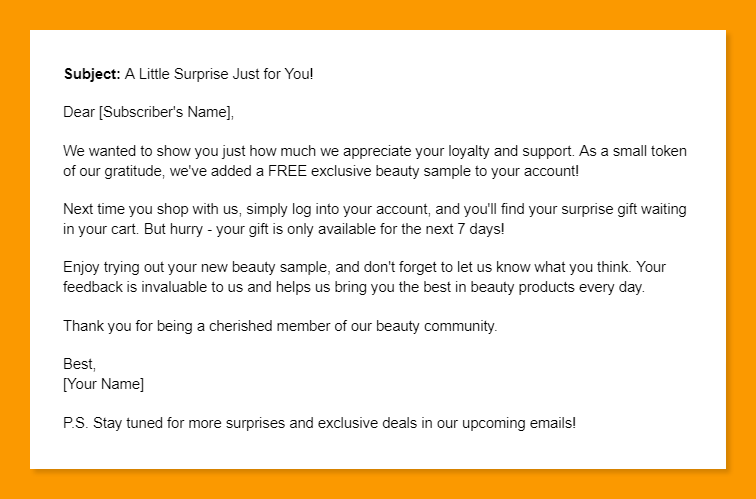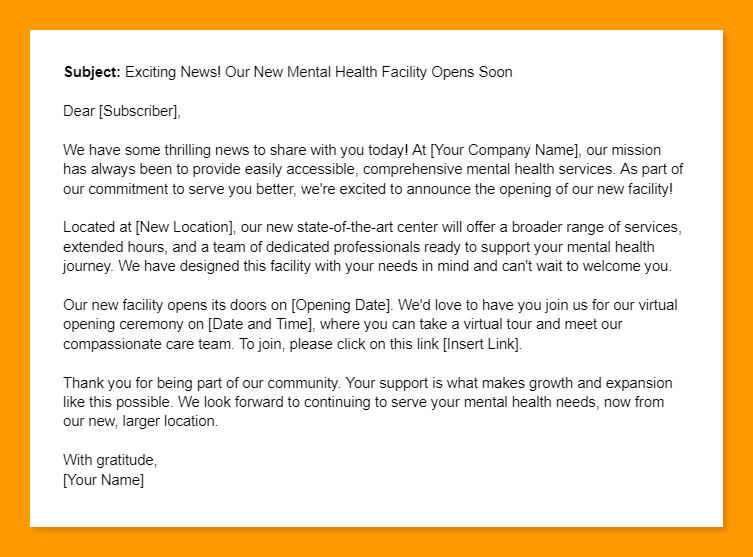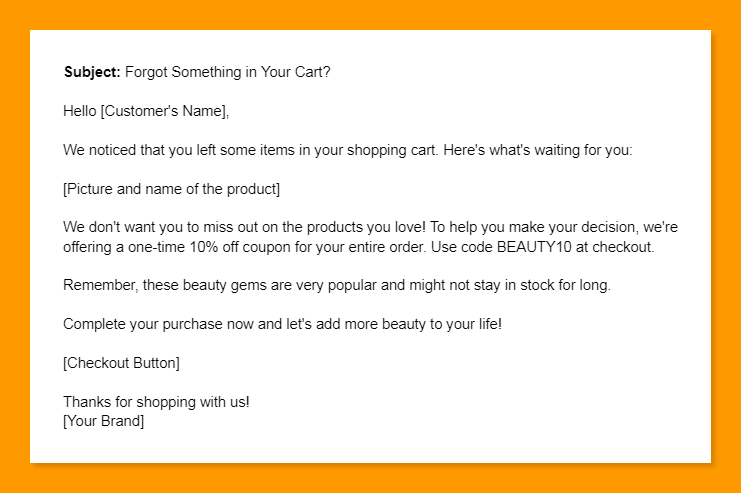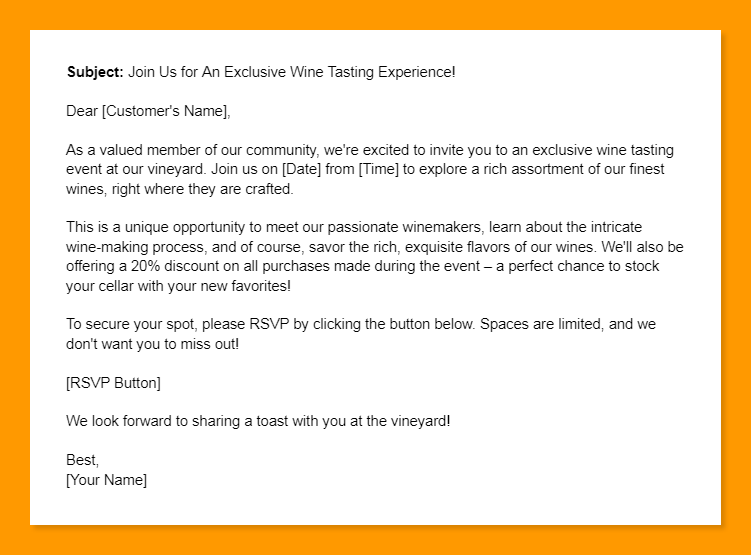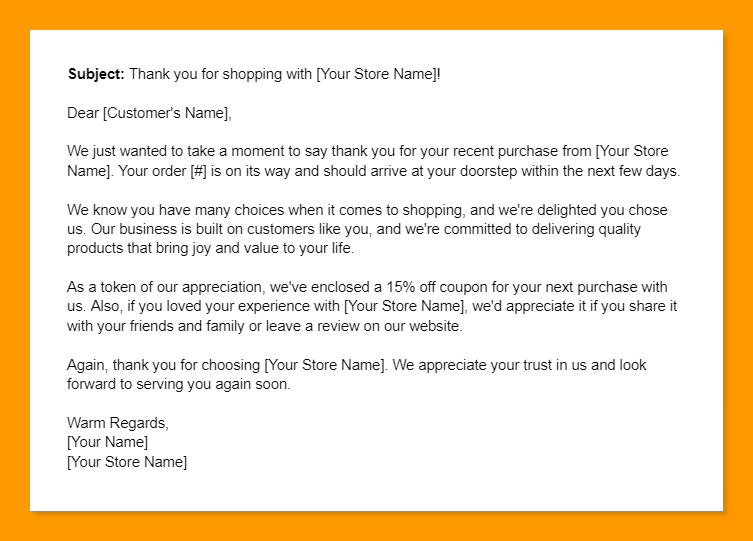Sending different types of emails is essential from an email marketing perspective as it maintains customer engagement, provides variety, and caters to different stages of the buyer’s journey. Variety helps prevent fatigue, keeps your content fresh and relevant, and allows you to deliver the right message at the right time, enhancing customer relations and conversion rates.
Are you experiencing a lack of engagement with your current email marketing strategy? Maybe you’re sending out newsletters but are met with underwhelming open rates, or your promotional emails aren’t generating the desired conversions. The good news is, there’s an effective solution at your fingertips – diversifying your email types.
Understanding and utilizing the different types of emails in your marketing strategy can be a game-changer. Each different type of email, from welcome emails and thank you emails to newsletters and announcement emails, serves a unique purpose and offers a unique opportunity to connect with your audience. By utilizing a variety of email types, you can cater to the varied needs and preferences of your audience, thereby boosting engagement, building stronger relationships, and driving conversions.
So don’t stay stuck in a one-type email rut. Embrace the power of utilizing different types of emails in email marketing to inject fresh energy into your email marketing strategy and watch as your engagement rates and conversions start to soar.
Overview
Types of Emails in Email Marketing
In the world of email marketing, variety is more than just the spice of life – it’s a critical ingredient in maintaining subscriber engagement. By sending different types of emails, you keep your subscribers on their toes, preventing the monotony that comes from receiving the same type of email time and again. This keeps your subscribers interested and engaged, increasing the chances of them opening your emails, clicking through to your website, and making a purchase.
Now that we’ve established why it’s important to diversify your email content, let’s dive into the nine different types of emails you should be sending to your email list.
1. The Welcome Email
A welcome email is the first official communication between a business and its new subscriber. It’s typically automated and sent immediately after someone subscribes to your email list. The purpose of a welcome email is multi-faceted:
Set the tone: A welcome email sets the stage for future communications. It’s a chance to showcase your brand’s personality and make a positive first impression.
Set expectations: This is the perfect time to inform your new subscribers about what they should expect from your emails – how often they’ll receive them and what type of content they’ll include.
Encourage engagement: Welcome emails have high open rates, making them the perfect opportunity to promote top-performing content, highlight popular products, or share a special discount code to encourage immediate shopping.
For example, a welcome email from a boutique clothing store might look something like this:
This email not only greets new subscribers but also gives them a sneak peek into what they can expect from your business, offers them a discount, and encourages them to start shopping.
For businesses, welcome emails are a must. They help establish a positive relationship with new subscribers right from the start, and they are known to generate 4x more opens and 5x more clicks than regular marketing emails, paving the way for increased subscriber engagement and more conversions. Therefore, it’s essential that businesses put thought and care into crafting their welcome emails.
2. The Special Offer Email
A special offer email is a type of email communication businesses send to their email subscribers, offering exclusive deals, discounts, or promotions. This type of email can be used to incentivize purchases, generate customer excitement, and add value to being a subscriber. By providing exclusive access or discounts to subscribers, businesses can drive consumer loyalty and reinforce the benefits of being on the mailing list.
Why is it important? Special offer emails serve a dual function. Firstly, they help drive sales. A compelling offer can encourage subscribers to make a purchase they might have been considering but hadn’t committed to yet. Secondly, they build goodwill and engagement with your brand. By sending special offers, you show your subscribers that you value them, which can lead to improved customer retention and brand loyalty.
Examples of special offer emails could include:
- Flash Sales: 50% Off All Items for the Next 24 Hours! This creates a sense of urgency, encouraging subscribers to make a purchase quickly before the offer expires.
- Subscriber Exclusives: Free Shipping on All Orders This Week!” This type of offer adds value to being a subscriber, fostering loyalty and encouraging purchases.
- Early Access for Subscribers: Shop our New Collection Before Anyone Else!” This offer generates excitement and positions the subscriber as having exclusive privileges, fostering brand engagement.
In writing special offer emails, it’s important to keep the offer clear and upfront, create a sense of urgency if applicable, and make it easy for the subscriber to redeem the offer, for instance, by including a prominent call to action like a “Shop Now” button. Using this approach, business owners can effectively use special offer emails to drive sales and engagement.
3. The Survey Email
A survey email is a type of email that businesses send to their subscribers to gather feedback, opinions, or to conduct market research. It usually contains a link to a questionnaire or survey form that subscribers can complete.
Sending a quick survey can help collect insight that can be used to hone in on customer preferences, improve product development, enhance customer satisfaction, and identify problems in need of solutions.
Here are a few examples of survey emails:
- Product Satisfaction Survey: After a customer makes a purchase, send an email asking them to rate their satisfaction with the product and share any suggestions for improvement.
- Post-Service Survey: If you provide a service, send a survey after the service is completed to gauge the customer’s experience. This can include questions about the quality of service, punctuality, and professionalism.
- Newsletter Feedback Survey: If you regularly send out newsletters, you can send a survey to ask subscribers what they think about the content. Are the articles helpful? What topics would they like to see more of?
Survey emails are a valuable tool for any business owner looking to understand their customers better and improve their products or services based on the feedback received.
4. The Review Request Email
A Review Request Email is a strategic message sent by businesses to their customers, asking them to share their experience with the company’s product or service by leaving a review. This feedback is often collected on platforms like Google, Yelp, or directly on the company’s website.
Review request emails are crucial for businesses for several reasons. First, they provide valuable insights into customers’ experiences and perceptions of the product or service, helping businesses improve their offerings and address any areas of concern. Second, positive customer reviews enhance a company’s reputation, instill trust in potential customers, and strongly influence purchasing decisions. Lastly, reviews can also boost a website’s SEO, as search engines favor websites with numerous positive reviews, leading to better rankings on results pages.
For example, a review request email might look something like this:
5. The Newsletter Email
The newsletter email is a periodic communication that provides subscribers with a round-up of the latest news, updates, tips, and content related to your business. It can include anything from the launch of new products or services, updates about your business, educational content, industry news, or special offers.
Newsletter emails are important for business owners as they help maintain regular communication with your audience, keep your brand top of mind, and provide an opportunity to deliver value, build relationships, and nurture leads.
For instance, let’s consider a roofing company. A monthly newsletter email from this business could include:
- An introduction from the owner discussing any important company updates or industry news
- A feature on a recent roofing project completed by the company, complete with before-and-after photos
- A homeowner tip related to roof maintenance, such as how to properly clean gutters or the signs of roof damage to look out for
- A special offer for a free roofing inspection before the stormy season
- Testimonials from happy customers to build trust
- Social proof showcasing recent awards or recognition the company has received
Such a newsletter keeps the roofing company fresh in the minds of past, current, and potential customers. When the need for a roofing service arises, subscribers are likely to remember and consider the company whose helpful tips and engaging content they’ve been regularly reading.
6. The Surprise Gift Email
A Surprise Gift Email is a type of email marketing strategy in which businesses send their subscribers an unexpected gift. The gift could be a discount code, a free product, an exclusive piece of content, or any other valuable offer that would be appreciated by your subscribers.
The importance of sending a surprise gift email to your list lies in the excitement and delight it creates among your subscribers. This strategy fosters a sense of appreciation and loyalty among your subscribers, which can lead to higher engagement rates, increased customer retention, and even boost sales. By offering an unexpected gift, you create a positive impression of your brand and make your subscribers feel special and valued.
Here’s an example of a surprise gift email a beauty supply store might send to their subscribers:
In this email, not only does the surprise gift generate excitement and enhance customer loyalty, but it also encourages an additional purchase and provides an opportunity for product feedback.
7. The Announcement Email
An announcement email is a targeted message sent to inform subscribers about important news, updates, or events related to your business. For business owners, sending announcement emails to their list is a powerful strategy to share significant developments that might interest or benefit their customers.
Here are a few reasons why announcement emails are essential:
- Keep customers informed: They help you keep your audience in the loop about your business’s latest happenings or changes.
- Build anticipation and excitement: If you’re launching a new product or service, an announcement email can help generate buzz.
- Enhance customer engagement: By sharing company news or updates, you give your customers another reason to interact with your brand, potentially leading to increased loyalty and engagement.
For instance, let’s say you’re a mental health service provider about to open a new facility. An announcement email might read as follows:
This type of announcement email not only informs customers about the new location but also helps build anticipation for its opening and extends an invitation for customers to engage more deeply with your brand.
8. The Abandoned Cart Email
An abandoned cart email is a type of follow-up message sent to customers who have added products to their shopping cart on an e-commerce site but left the site without completing the purchase. These emails act as reminders, nudging customers to finalize the transactions they left midway.
The importance of abandoned cart emails is enormous, particularly for e-commerce store owners. Shopping cart abandonment is a common issue faced by all online retailers. It’s reported that nearly 70% of online shopping carts are abandoned before the customer completes a sale.
Abandoned cart emails are a proven strategy to recover these potentially lost sales. They remind customers of the products they left behind, rekindle their initial interest, and often offer incentives (like discounts or free shipping) to encourage completion of the purchase.
Here is an example of an abandoned cart email for a beauty supply e-commerce store:
By reaching out with a personalized, friendly message and a little incentive, you’re likely to see an increase in the conversion of abandoned carts into successful sales, boosting your business revenue.
9. The Event Invitation Email
An event invitation email is a powerful tool businesses use to invite their email subscribers to upcoming events. These emails can serve a variety of purposes, whether it’s to increase brand awareness, launch a new product, strengthen customer loyalty, or even directly generate revenue.
Event invitation emails are particularly important for business owners because they create a personalized touchpoint with customers, inviting them to engage with the business in a real-world setting. This deepens the connection between a brand and its customers, fostering a sense of community and loyalty.
For example, a vineyard could send an event invitation email for an upcoming wine tasting event. Here’s a hypothetical example:
Such an event invitation email not only encourages the subscriber to attend the event but also creates anticipation and excitement. It positions the business as one that values its customers and wishes to share unique experiences with them.
10. The Thank You Email
A Thank You email is a message sent by businesses to show appreciation to their customers, usually following a purchase, a milestone, or a specific customer action. These emails are not merely a matter of good manners. They’re a powerful way to build and strengthen relationships with your customers, enhance customer loyalty, and increase brand affinity.
For businesses, the importance of sending Thank You emails can’t be overstated. Firstly, they provide an opportunity to make customers feel valued and appreciated, which significantly increases the likelihood of repeat business. Moreover, it’s a chance to make your brand memorable and differentiate yourself from competitors.
Additionally, Thank You emails can serve as a subtle marketing tool. They can be used to encourage future purchases (through upselling or cross-selling), gather reviews and feedback, or even generate referrals. Despite this, the primary focus should always be on showing genuine gratitude, not overt selling.
Here’s an example of a thank you email you can send after a customer makes a purchase:
Need Help Managing Your Email List?
As a business owner, we understand you’re constantly juggling multiple responsibilities. From operations and finance to human resources and sales, there’s barely a minute to breathe, let alone create an email marketing strategy. We’re here to help!
Sachs Marketing Group offers email marketing management services so you can focus on other aspects of your business. Our team of experts can help manage your email newsletter, craft emails you’d like to send, and strategize types of emails to include throughout your email marketing strategy. .
Don’t let the potential of email marketing slip through your fingers due to a lack of time or resources. Contact us to schedule a time to meet with Eric Sachs, and discover how our full-service digital marketing agency can help your business today.
FAQs
We hear a lot of questions from curious business owners interested in exploring how they can improve their email marketing efforts. Here are some of the most frequently asked questions and answers for your considerations.
What should I send in an email list?
In an email list, you should send a variety of content that adds value for your subscribers. This may include welcome emails, educational content, newsletters, product or service updates, special offers, and event invitations. The key is to maintain relevance, provide value, and encourage engagement to foster a strong relationship with your audience.
How many emails should you send to your email list?
The number of emails you should send to your email list can vary based on your industry, audience preference, and your content strategy. A general recommendation is 1-2 emails per week to maintain engagement without overwhelming subscribers. However, it’s crucial to monitor your engagement metrics (open rates, click-through rates, unsubscribe rates) to find the optimal frequency for your specific audience.
What is a mass email list called?
A mass email list, also referred to as a “bulk email list” or “email broadcast list,” is a collection of email addresses used by businesses to send marketing messages to multiple recipients simultaneously. These lists are crucial for businesses running email marketing campaigns, as they enable communication with a large audience, thus promoting their products, services, or updates on a large scale.
What are the types of emails you’ll use in email marketing?
In email marketing, you’ll use various types of emails including Welcome Emails to greet new subscribers, Newsletters to share updates and valuable content, Transactional Emails for purchase confirmations and updates, Promotional Emails to advertise products or offers, Survey Emails to gather customer feedback, Re-engagement Emails to connect with inactive subscribers, and Thank You Emails to show customer appreciation. Each type serves a unique purpose in building relationships and driving conversions.
Conclusion
The beauty of email marketing lies in its versatility. It is a platform that allows you to establish an effective, personalized line of communication with your audience. The different types of emails, from welcome email to thank you emails, each play a vital role in creating an enriched customer journey.
Remember, it’s not about bombarding your list with messages, but about delivering the right content at the right time. Keep experimenting, analyzing, and refining your strategy based on what resonates with your audience. By mastering this intricate dance, you can truly leverage the power of email marketing for your business’s success.
Contact us today to get the conversation started!

